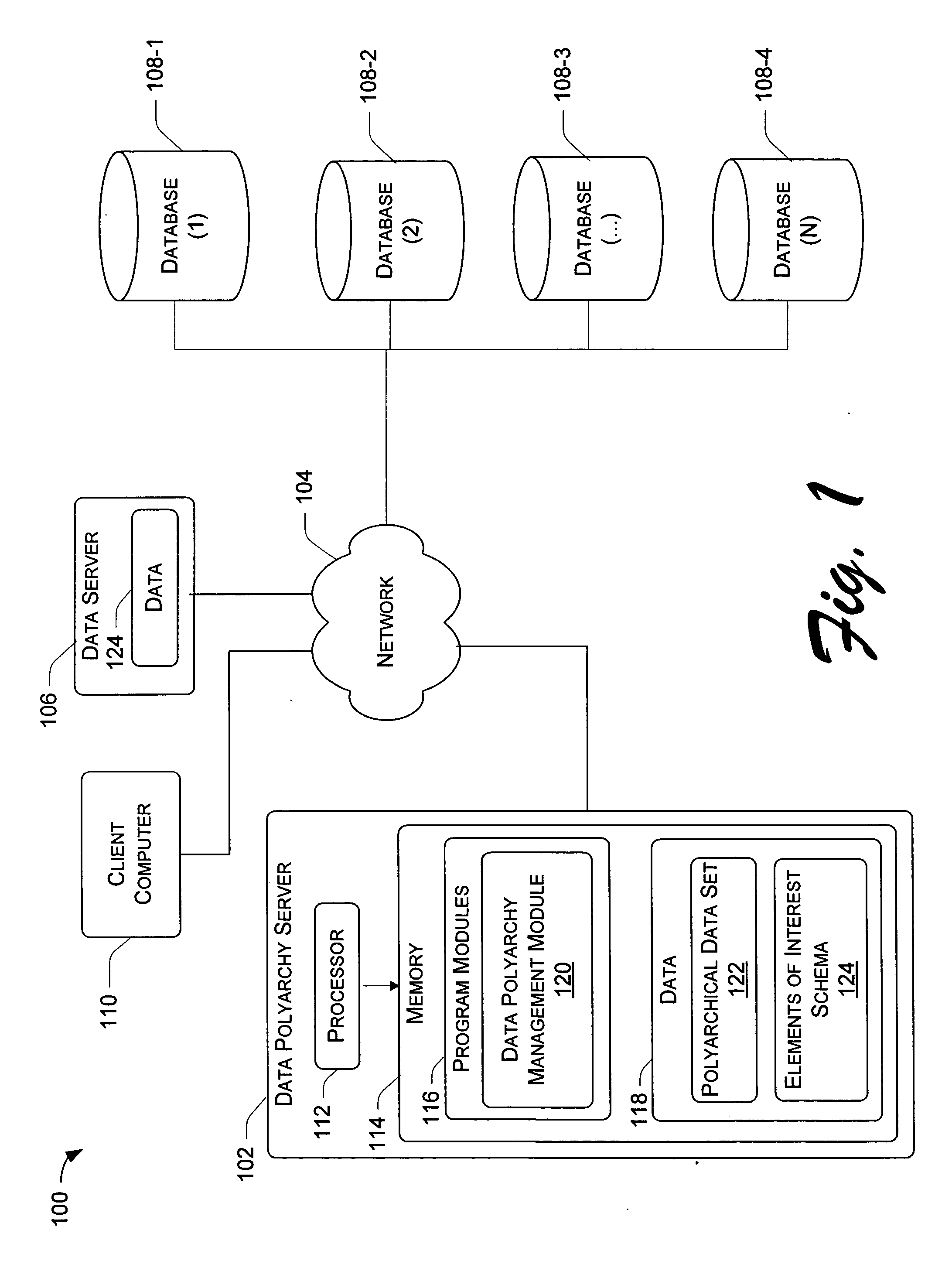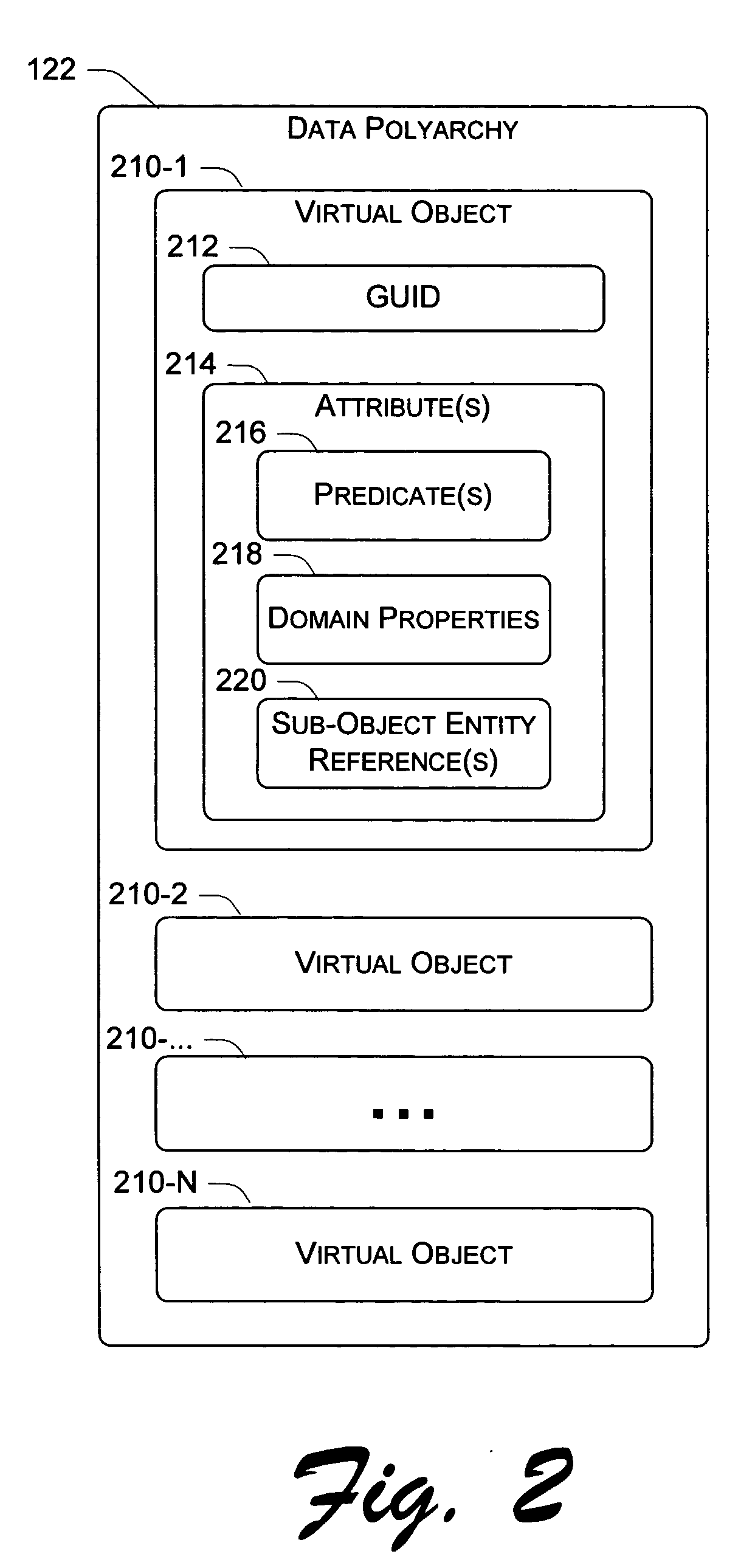Dynamically generated schema representing multiple hierarchies of inter-object relationships
a dynamically generated schema and inter-object relationship technology, applied in the field of object-to-object or “ inter-object relationship” relationships, can solve the problems of complex inter-object relationship (e.g., multiple hierarchy, representing, etc.) that cannot be simply and adequately represented and the elastic data relationship is not easily described, represented or navigated using conventional data store systems and techniques
- Summary
- Abstract
- Description
- Claims
- Application Information
AI Technical Summary
Benefits of technology
Problems solved by technology
Method used
Image
Examples
Embodiment Construction
Overview
The following subject matter replaces traditional notions of complex real-world object presentation within a single static hierarchy, wherein directory object naming and inter-object relationships are inter-tangled and unwieldy for representing complex data relationships. More specifically, traditional notions of distinguished names for representing inter-object relationships within a single directory of static inter-object relationships are replaced with graphs of elastic (non-static) inter-object connections in multiple dimensions of data relationships (e.g., mono and / or bi-directional relationships) based on attributes of the objects. In other words, the data relationships establish that one or more data objects participate in one or more respective dimensions, or polyarchies of inter-object relationships. One or more of these hierarchies can intersect creating intersecting hierarchies of inter-object relationships.
Dynamically generated multiple hierarchies of data r...
PUM
 Login to View More
Login to View More Abstract
Description
Claims
Application Information
 Login to View More
Login to View More - R&D
- Intellectual Property
- Life Sciences
- Materials
- Tech Scout
- Unparalleled Data Quality
- Higher Quality Content
- 60% Fewer Hallucinations
Browse by: Latest US Patents, China's latest patents, Technical Efficacy Thesaurus, Application Domain, Technology Topic, Popular Technical Reports.
© 2025 PatSnap. All rights reserved.Legal|Privacy policy|Modern Slavery Act Transparency Statement|Sitemap|About US| Contact US: help@patsnap.com



